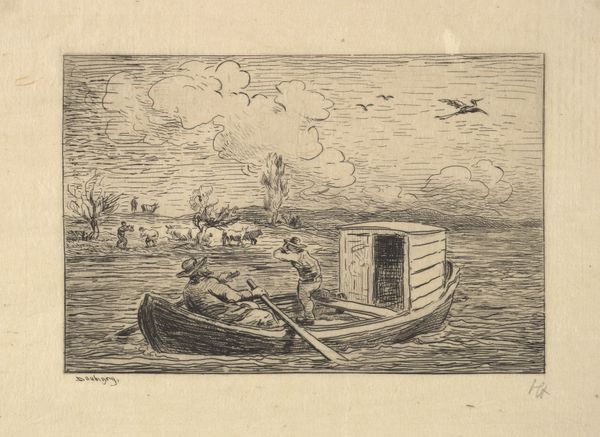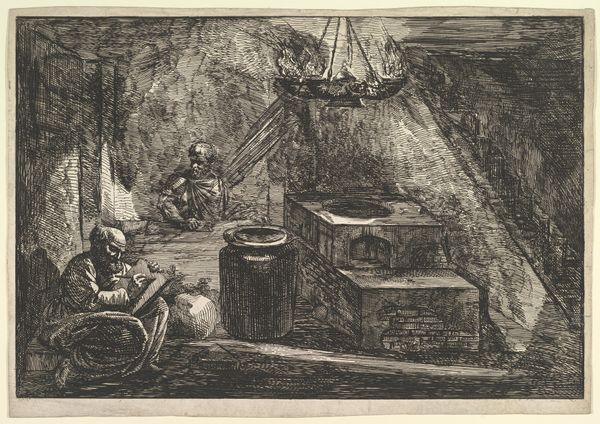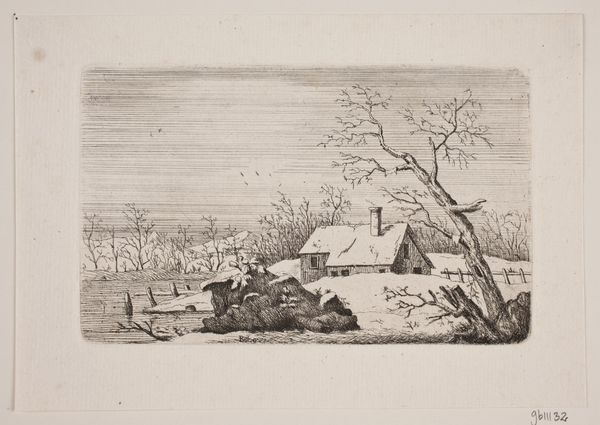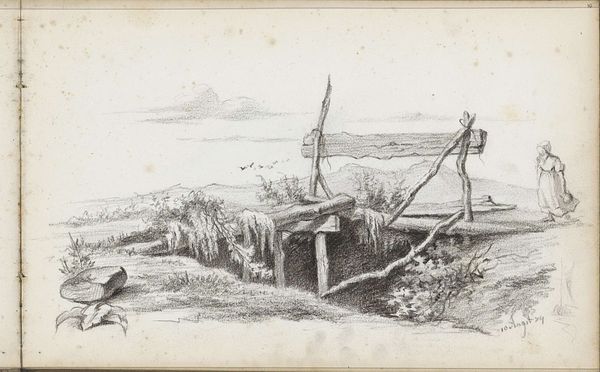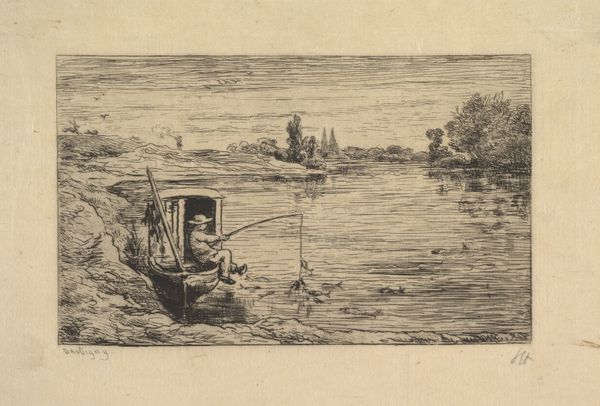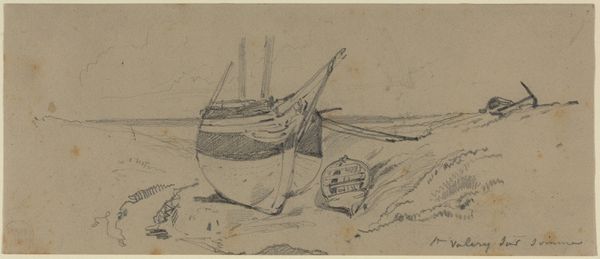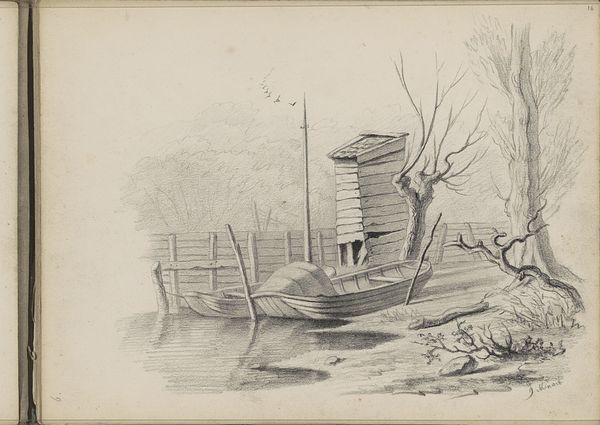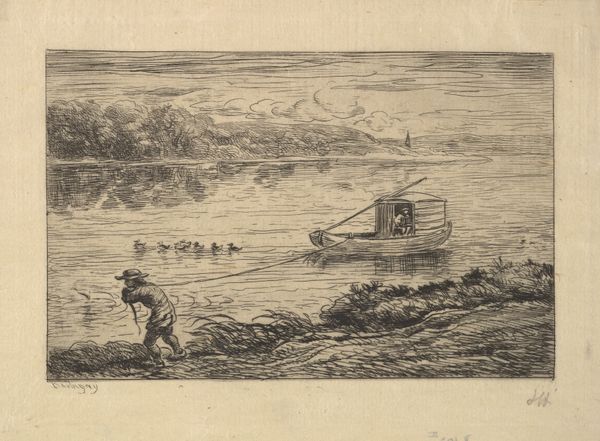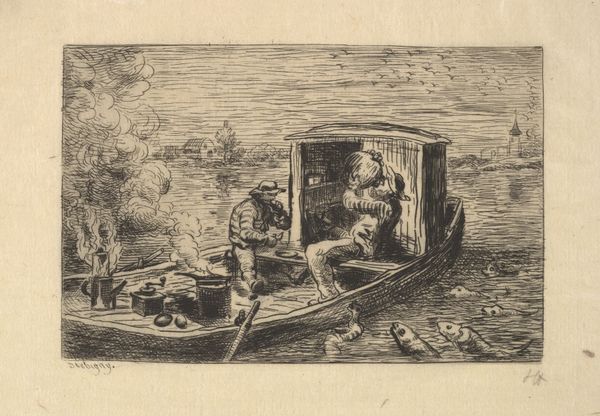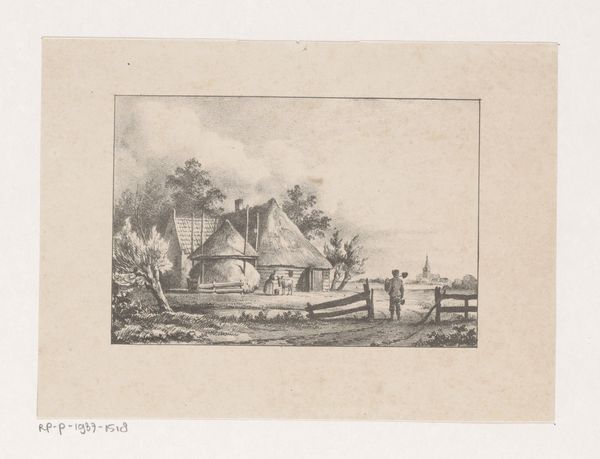
drawing, lithograph, print, paper, ink
#
portrait
#
drawing
#
lithograph
# print
#
landscape
#
paper
#
ink
#
romanticism
Dimensions: 232 × 320 mm
Copyright: Public Domain
Curator: Let's turn our attention to this delicate lithograph entitled "A Boy Sitting on a Banked Vessel," crafted by Cornelius Varley around 1809. What strikes you most upon seeing this work? Editor: Immediately, the atmosphere; there’s a strong feeling of melancholy. The detailed rendering of the textures - the worn wood of the boat, the roughly sketched building beside it – evoke a sense of loneliness, amplified by the small figure seemingly lost within this landscape. Curator: That mood really fits with the art world during the late eighteenth and early nineteenth centuries. The focus shifted, emphasizing emotion, imagination, and individualism, turning towards a fascination with the sublime. This lithograph embodies a romanticist yearning for escape and an introspective relationship with nature, that really dominated the cultural discourse. Editor: And where does this romantic yearning come from? I am interested in the position of this boy. His stillness. The water vessel beside that rather grand house evokes many possible connotations such as the societal stratification. What if he belongs to this building? Or works here? What sort of boyhood can he expect? It looks desolate. Curator: Certainly, considering the era, there is a possibility to see the artwork under this socio-political context. What intrigues me more about this scene is the intentional display of what seems ordinary - a quiet moment rather than a grand historical event. The drawing employs stark contrasts of light and shadow created by pen markings, to really guide our eyes to the horizon that opens up towards what might have been considered an enlightened and promising landscape. The artist uses very basic lines that allow him to draw and explore at the same time the beauty and possibilities in these humble scenes. Editor: I can see that the artist has placed the main character intentionally by his side. While I agree there is a sublime landscape and beautiful display of this common scenery, as you put it. To me, it brings more of an ambiguous narrative rather than anything promising, or sublime as you called. The boy in the boat can be understood to be symbolizing helplessness. This contrasts with how things looked like to society in those times. Curator: I find it incredibly fascinating how this image of this rather normal scene triggers our own interpretations. For me it reflects a turning point that affected visual and liberal art during the late 1700’s. Editor: Yes, it is rather insightful, seeing how different this can be when interpreted, depending on what angle you choose to look at this simple scene. It is the strength of any great art to provoke us regardless of its historical context.
Comments
No comments
Be the first to comment and join the conversation on the ultimate creative platform.
